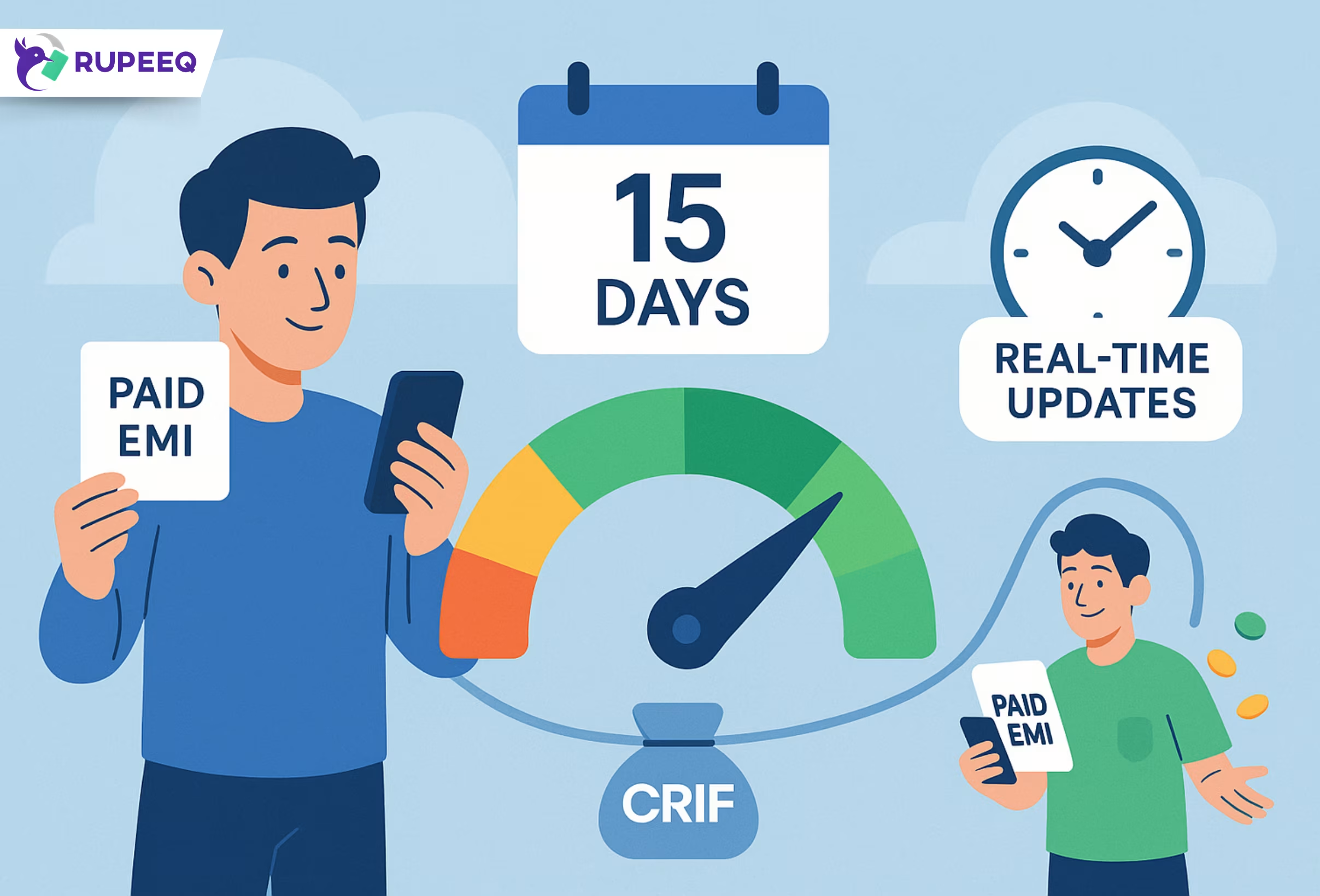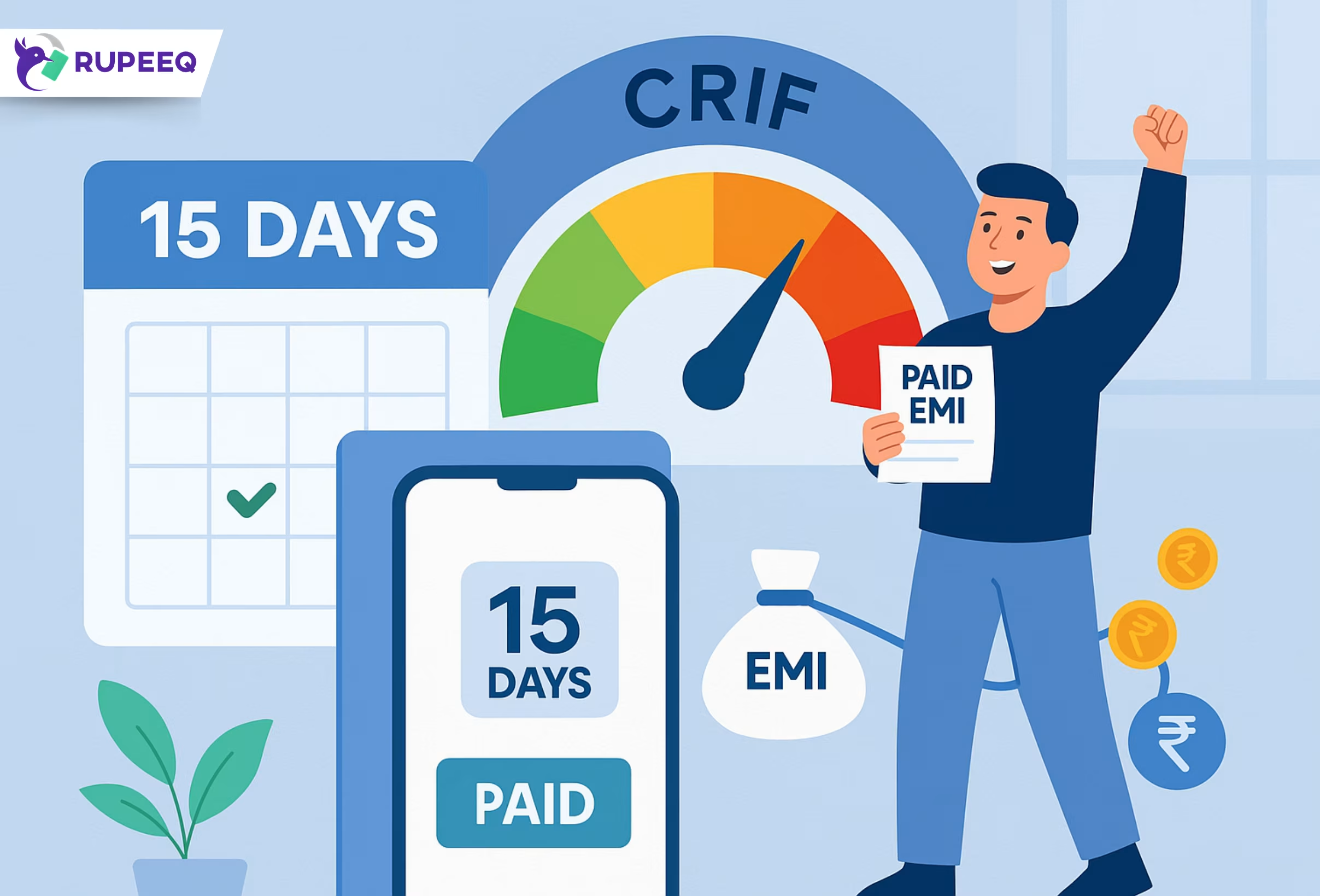If you’re a salaried professional aiming to improve your creditworthiness, your CRIF score plays a big role. Whether you’re eyeing a personal loan, home loan, or want better interest rates, boosting your CRIF score quickly can significantly improve your chances. In this blog, we’ll show you practical, time-bound steps salaried individuals can follow to raise their CRIF score in just 60 days.
What is a CRIF Score and Why Does It Matter?
CRIF score is a three-digit number that reflects your creditworthiness based on your financial and credit behavior. It ranges from 300 to 900, with a score above 750 generally considered good.
Lenders use CRIF scores to evaluate your loan eligibility, interest rate offers, and overall credit behavior. If your score is low or moderate, it’s worth taking strategic steps to improve it—especially if you’re salaried and aiming for better financial access.
Can You Really Improve CRIF Score in 60 Days?
While drastic changes may take longer, targeted improvements over 60 days can boost your CRIF score by 20 to 60 points in many cases. The key lies in identifying what’s pulling your score down and applying focused strategies that work best for salaried individuals.
1. Check Your Latest CRIF Report First
Start by downloading your CRIF credit report. This will show you:
- Your current score
- Open loans and credit accounts
- Missed or delayed payments
- Credit utilization ratio
- Errors (if any)
RupeeQ Tip: Use RupeeQ ACE to access your CRIF report and get personalised improvement insights. This helps you take targeted actions rather than generic ones.
2. Prioritize Clearing Small Overdues First
If your report shows small overdue EMIs or outstanding dues (say ₹2,000–₹10,000), clear them immediately. These small defaults can have a disproportionate negative effect on your score.
Why This Works:
- Credit bureaus reflect cleared dues within the next 15–30 days
- Your credit behavior shows improvement right away
- Brings down your “Days Past Due” (DPD) metric, which lenders see
3. Set Up Auto-Pay for All Loan EMIs
If you’re juggling multiple loans—personal loan, consumer durable loan, or a two-wheeler EMI—missing even one payment can dent your CRIF score.
Action Plan:
- Link EMIs to your salary account
- Set up auto-debit at least 3 days before the due date
- Add an SMS or email reminder as a backup
4. Reduce Credit Utilization Ratio Below 30%
Using more than 30% of your credit limit signals financial stress. If your credit card bill is often maxed out, it drags your score down.
Quick Fix:
- Pay off the card partially before the statement is generated
- Don’t close credit cards; instead, request for a higher credit limit
- Keep monthly usage under 30% of the total limit
Example: If your credit limit is ₹1,00,000, try not to use more than ₹30,000 in any billing cycle.
5. Avoid Applying for New Loans During This Period
Every loan application leads to a hard inquiry, which slightly reduces your score. Multiple inquiries in a short time create a negative impression.
Instead:
- Focus on improving your score first
- Use soft inquiries to check pre-qualified offers via RupeeQ
- Let your score recover before you explore multiple products
6. Dispute and Correct Errors in CRIF Report
Sometimes, your CRIF report may show:
- Loans already paid but marked as “open”
- Duplicate accounts
- Incorrect DPD (Days Past Due)
- Default history not updated
Raise a dispute immediately. As per the RBI’s 15-day credit reporting rule, CRIF must reflect updates faster than before.
How to File a Dispute:
- Log in to CRIF’s official website
- Submit a dispute with supporting documents
- Corrections usually reflect in the next 15–30 days
RupeeQ Tip: Keep a screenshot of all dispute requests and communication as proof. Track the update on your report regularly.
7. Avoid Co-Signing or Acting as Guarantor
If a friend or relative asks you to be a co-applicant or guarantor, it can impact your score if they default. For the next 60 days, it’s best to avoid such commitments.
Why This Matters:
- The account reflects in your credit report
- Any default or delay affects your credit score too
- Even a late EMI not paid by the primary borrower can lower your score
8. Keep Older Credit Accounts Open
Your credit age (how long you’ve had credit) is a factor in your CRIF score. Don’t close old loans or credit cards—especially those with a clean repayment history.
Strategy:
- Keep old credit cards active with small monthly spends
- Make sure you pay the bill in full
- This shows long-standing, responsible credit usage
9. Schedule a Midway Check After 30 Days
Don’t wait till the end of 60 days. After 30 days:
- Pull a fresh CRIF report (preferably soft check via RupeeQ)
- Evaluate improvements in DPD, credit utilization, and payment history
- Adjust your strategy for the next 30 days
10. Use a Microloan or Small Ticket Loan Strategically
If you have no credit history or a thin credit profile, a small personal loan (₹10,000–₹25,000) repaid over 2–3 months can help build credit.
But only if:
- You’re sure of timely repayment
- You use this loan to diversify your credit profile
- You avoid multiple inquiries
RupeeQ Tip: You can explore short-term loan options with minimal processing time via RupeeQ if you’re new to credit.
Sample 60-Day Plan to Boost Your CRIF Score
| Week | Action Item | Expected Impact |
| 1-2 | Pay off small overdues | Remove DPD, improves history |
| 2-3 | Set up auto-pay for all EMIs | Avoids future delays |
| 3-4 | Dispute and fix report errors | Clean up credit file |
| 4-5 | Lower credit usage on credit cards | Improves utilization ratio |
| 5-6 | Avoid new loans or inquiries | Prevents score dips |
| 6-8 | Mid-review + maintain good behavior | Compound positive effect |
Final Words
Improving your CRIF score in 60 days is realistic if you’re a salaried borrower who takes focused and timely action. From paying off small dues to automating EMIs, every small step makes a measurable impact. With the RBI’s faster reporting guidelines, these efforts will reflect more quickly than before.
Start by checking your CRIF score through RupeeQ, take control of your repayment behavior, and unlock better loan and credit card offers in just two months.







